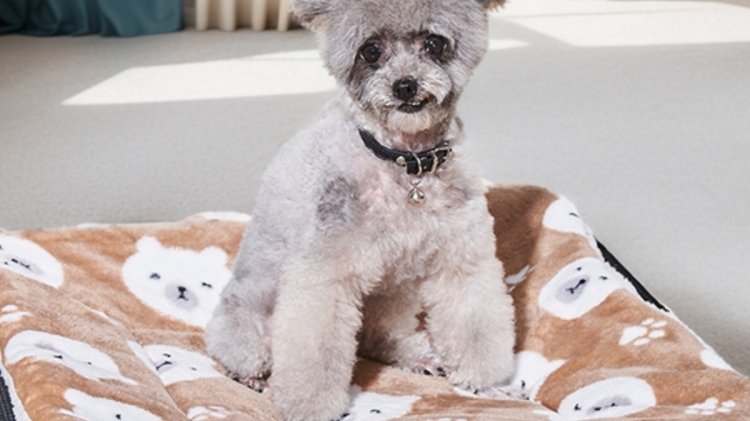
Diy PVC Dog Bed:A Mini Guide
DIY PVC dog bed is a wonderful way to show appreciation to your canine companions, who are undeniably man’s best friends. These loyal pets provide

Building your own custom elevated dog bed is a fun and rewarding DIY project for pet owners. With the right materials and basic tools, you can handcraft a high-quality bed tailored exactly to your dog’s size and style preferences.
Follow this DIY guide to create a custom elevated bed your pup will love.
Making your own elevated bed offers many advantages:
You can customize the dimensions to fit your dog perfectly.
Budget-friendly
DIY is cheaper than buying a premade bed.
You get to pick fun fabrics and materials.
You control quality and sturdiness.
Add decorative details for a one-of-a-kind bed.
Experience the rewarding satisfaction of making something special for your beloved dog.
Before starting your project, plan out your elevated bed design:
Take exact measurements of your dog to determine the ideal bed platform size. Add a few extra inches on all sides for comfort.
Select materials for the frame, platform, legs, and bedding that match your skill level and budget.
Pick a color scheme, fabrics, and decorative accents that fit your home décor and style.
Choose bedding that matches your dog’s preferences for softness, warmth, and chewing resistance.
Consider convenience features like storage, collapsibility, removability, and adjustability.
Draw sketches of your planned bed design from all angles to use as a building blueprint.
Thorough planning sets you up for a successful building process.

The frame provides the underlying structure to build upon. Consider these strong and stable framing options:
Choose wisely as the frame must securely hold weight and withstand daily use. Hardwoods like oak are very sturdy options.
You’ll need these supplies to assemble your frame:
Stock up on the tools and hardware required for your chosen frame materials prior to starting.
Follow these steps to assemble your elevated bed frame:
Carefully constructing the frame ensures your elevated bed has a solid stable base.
The platform acts as the core surface of the bed. Sturdy yet comfortable options include:
Choose a platform material that matches your skill level and provides support without sagging.
Install your platform material onto the completed frame:
The platform installation process finishes the structural base of the elevated bed before bedding is added.

Finish your elevated bed with soft, supportive bedding:
Choose bedding suited to your dog’s preferences, chewing habits, and climate.
Finish your elevated dog bed with plush bedding:
Fluffing and smoothing the bedding completes the comfy elevated bed!
Personalize your DIY elevated bed with decorative details:
Your creativity is the only limit for accessorizing your dog’s handmade bed!
Follow these tips to ensure an easy and successful DIY elevated bed project:
With good preparation and care, you can totally DIY a custom elevated bed your dog will enjoy for years to come!

These troubleshooting tips will help solve any issues:
Bed Wobbles
Platform Sags
Bedding Shifts
Legs Loose
Check for issues at each step of the process to remedy them promptly.
With some DIY skills and creativity, you can build a custom lit surélevé pour chien exactly suited to your best friend. Plan your design, choose quality materials, follow construction steps, and add decorative details.
Your pup will love lounging on a bed you personally sized and crafted just for them. And you’ll gain the fulfilling satisfaction of a DIY project benefiting your beloved pet.


DIY PVC dog bed is a wonderful way to show appreciation to your canine companions, who are undeniably man’s best friends. These loyal pets provide

When it comes to ensuring your pet’s comfort, the choice of a dog elevated bed can make a significant difference. In this blog, we delve

The moment you think of a dog elevated bed, the question arises: is it more suitable for a Great Dane or a Chihuahua? This blog

In the quest for the perfect dog elevated bed, pet owners are often faced with a dilemma: foldable or fixed? Each type offers unique benefits,

DIY PVC dog bed is a wonderful way to show appreciation to your canine companions, who are undeniably man’s best friends. These loyal pets provide

When it comes to ensuring your pet’s comfort, the choice of a dog elevated bed can make a significant difference. In this blog, we delve

The moment you think of a dog elevated bed, the question arises: is it more suitable for a Great Dane or a Chihuahua? This blog

In the quest for the perfect dog elevated bed, pet owners are often faced with a dilemma: foldable or fixed? Each type offers unique benefits,
Copyright © 2024 skyrestelevateddogbed. All Rights Reserved.